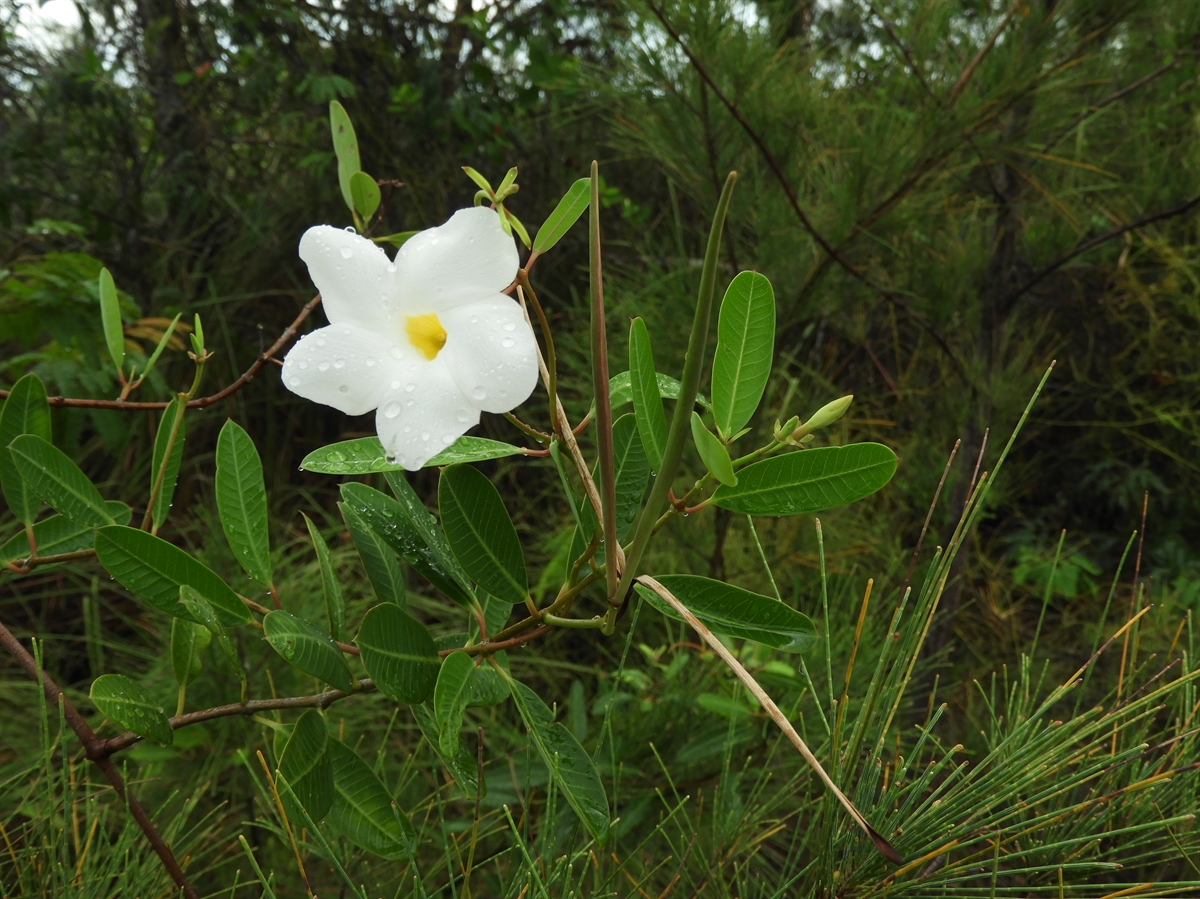Habit: Rhabdadenia biflora grows as a vine climbing over other vegetation and structures to 7 m in length/height. The leaves are arranged oppositely, obovate to elliptic, and up to 12 cm in length. The leaf tip is acuminate/obtuse and mucronate and the margins are entire. Stems and leaves have a milky sap.
The complete, perfect, actinomorphic flowers are arranged in cymes. The calyx has 5, unfused, green, elongate sepals. The corolla has 5, white with yellow center petals that are fused at the base forming a tube up to 3 cm long. At the end of the tube there are 5 lobes forming a pinwheel with the bottom edges of the lobes overlapping to one side. There are 5 stamens and 5 staminodes that are fused to the inside of the corolla tube. The ovary is superior, forming follicles in pairs, each up 15 cm in length. The seeds are brownish and have tufts of hairs (pappus) that assist in aerial dispersal.
Habitat: Rhabdadenia biflora grows in Mangrove systems.
Distribution: Rhabdadenia biflora occurs on the central and northern of the Lucayan Archipelago as well as the Caribbean region, Central and northern South America.
Medicinal/Cultural/Economic usage: Rhabdadenia biflora is not known to be used medicinally in the Lucayan Archipelago.



